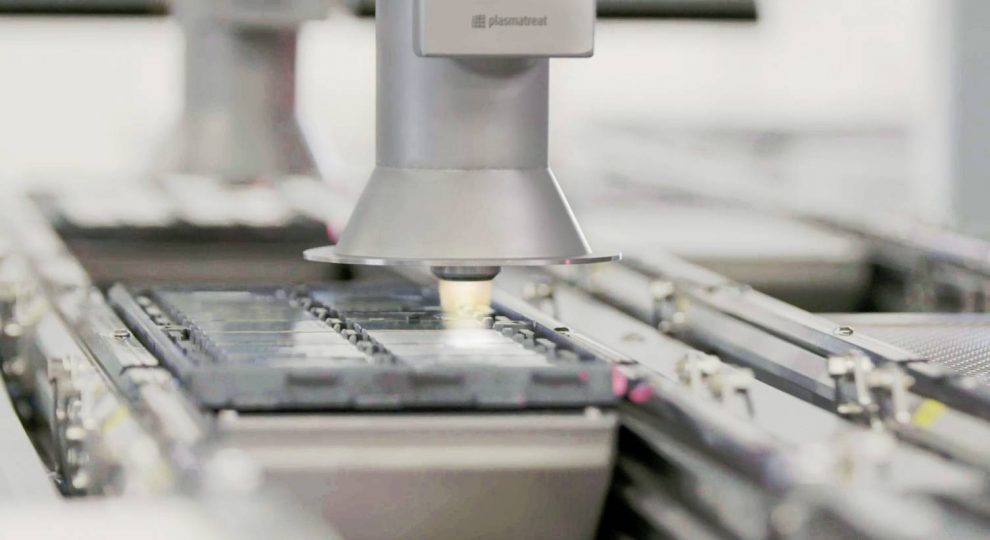Semiconductors are in short supply right now and demand is showing no signs of easing off. With this in mind, increasing throughput is just as important as increasing yield to deliver a high quality product. In its capacity as a long-standing and experienced supplier, the technology leader Plasmatreat GmbH from Steinhagen, Germany, has therefore faced up to the increased challenges and developed a fully automated inline system for selective pretreatment with Openair-Plasma that is designed according to market requirements. In doing so, customers benefit from a flexible, potential-free, high-speed treatment.
Vacuum plasma has been used for many applications in the semiconductor industry over the years. The Openair-Plasma process from Plasmatreat, on the other hand, facilitates a fast, inline process for pretreatment under atmospheric conditions that is suitable for surface treatments such as microfine cleaning, activation, and plasma coating. This technology can be used in a variety of ways in the field of semiconductor manufacturing – for example, it enables microfine cleaning in the packaging processes, thereby replacing the vacuum chamber in the production of chip packaging in an efficient and cost-effective manner.
Other areas of application include wire and die bonding, thermal compress bonding, and pre-molding. “As an established system supplier, we accepted a request from a long-standing customer to develop a special system for them, which is called a Plasma Treatment Unit (PTU). In order to adhere to the customer’s speed specifications, we worked with a dual-lane concept for this PTU, which allows us to treat components in parallel on two conveyor belts within a single system. This PTU can selectively pre-treat JEDEC trays handling 8 to 128 components on defined depositing devices, for the subsequent thermal compress bonding process and is designed for maximum throughput,” explains Nico Coenen, Market Segment Manager Electronics at Plasmatreat, with regard to the key challenges.
Comprehensive options
The PTU, which is designed for the specific process engineering sequence of semiconductor manufacturing, can be seamlessly integrated into production lines. It offers various kinematics and automation options, such as precise-fit handling of assemblies and components, and allows efficient surface treatment. “Since we already produce fully automated systems for other industries, we already had the internal design and automation expertise required to develop and implement this customer system,” elaborates Nico Coenen.
“In order to develop an inline-capable system for the semiconductor industry and be able to guarantee the highest possible cycle times, we had to take several process steps into account and implement these with precision as early as the conception phase,” stresses Coenen. For example, Plasmatreat developed the dual-lane concept specifically for high-speed treatment of up to 1.5 m/s. The dual-lane-concept is essentially suitable for various applications, with the system designed for both JEDEC trays and lead frames. It has different processing concepts according to the cycle time, and communication within the production line takes place via the standard equipment interface protocol interface in the semiconductor industry, SECS/GEM.
With regard to the work steps, these are all recorded in the PTU and the traceability of the treatment is ensured by reading barcodes on the chips. One of the many benefits of this is that it records where exactly the individual components were selectively treated and whether, for example, only the top of a component was treated with plasma. Furthermore, the testing capacities at the Steinhagen site were expanded and a Class 6 clean room was set up for this special project and others.




